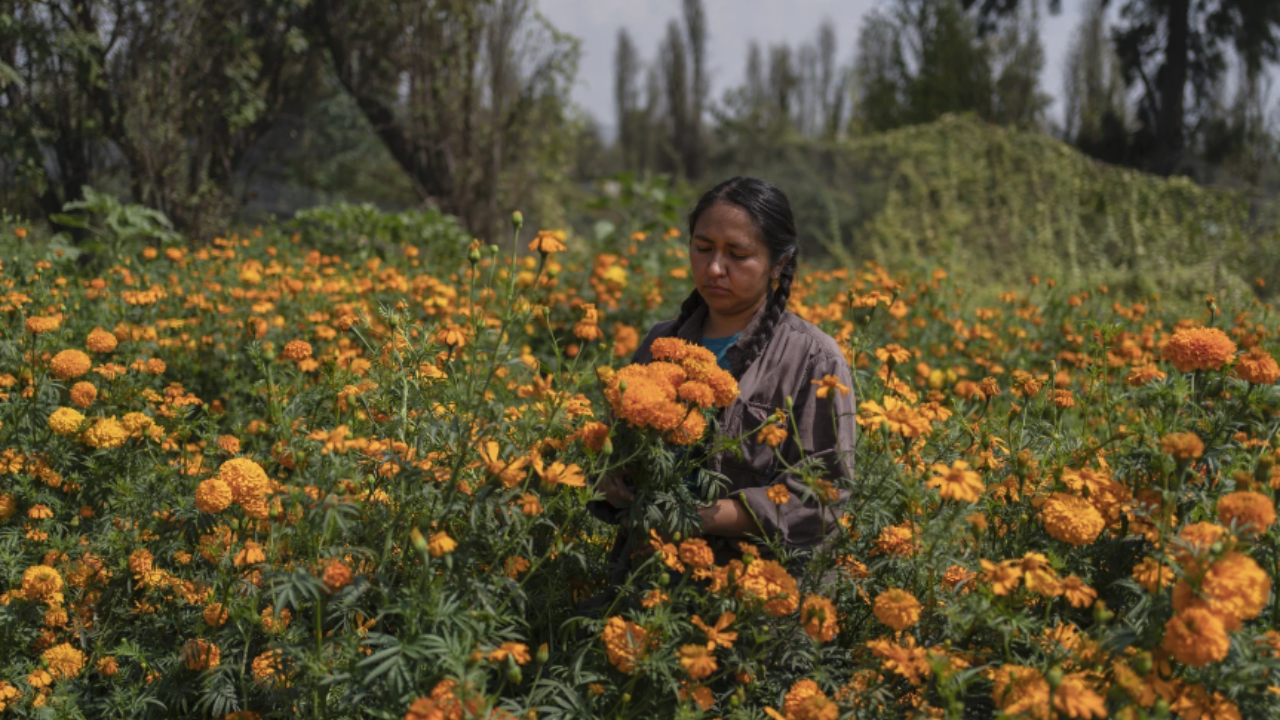
©(AP Photo/Felix Marquez)
Pre-reading questions:
I will read each question. Then, please answer them.
講師がそれぞれの質問を読むので答えましょう。
- Have you ever visited a farm?
- Is it important to educate younger generations about traditional farming techniques?
Vocabulary:
I will read the words, meanings, and sample sentences. Then, repeat after me.
単語、意味、例文を読みます。講師に続いて音読しましょう。
- floating /FLOH-ting/
- lakebed /LEYK-bed/
- interest /IN-ter-ist/
- promote /pruh-MOHT/
- importance /im-PAWR-tns/
[adjective] – resting or moving on the surface of a liquid without sinking
The floating lanterns illuminated the night sky during the festival.
[noun] – the bottom of a lake
Divers explored the lakebed to find ancient artifacts.
[noun] – a feeling of wanting to know or learn about something
She has a strong interest in learning different languages.
[verb] – to encourage people to like, buy, use, do, or support something
The organization promotes health and wellness in the community.
[noun] – the quality of being important
Teachers emphasize the importance of reading every day.
Article reading:
Please read the whole article. Then, I will check your pronunciation and intonation.
記事を音読しましょう。講師はあなたの発音とイントネーションを確認します。
Chinampas are a farming system created by the Aztecs, an ancient civilization in central Mexico. These “floating gardens” have fed communities in what is now Mexico City for centuries. Built from lakebed mud to make fertile islands, chinampas are key to local agriculture. However, as the city grows, many farmers are moving away from chinampa farming to more profitable uses, like soccer fields. Cassandra Garduño, a farmer dedicated to preserving chinampas, says interest in this tradition is fading. Low prices for chinampa-grown crops have caused some families to sell or rent their lands, putting this cultural practice at risk. Despite these problems, efforts are being made to restore chinampa farming. Garduño is part of Chinampa Refuge, a group that promotes sustainable farming and teaches young people about the importance of chinampas. Ecologist Luis Zambrano’s research shows that chinampas can grow many crops without chemicals or extra irrigation, supporting wildlife and helping cool the city. Local authorities are working to protect these farms, a UNESCO World Heritage site, so they can survive into the future.
True or False:
Read the sentences and identify if they are true or false based on the article.
文章を読んで、記事に基づいて正誤を答えましょう。
- Chinampas are made from sand and stones.
- Many farmers are moving away from chinampa farming.
- Interest in chinampa farming is growing among young people.
- Chinampas can only grow a few types of crops.
- Chinampa farming requires a lot of chemical fertilizers and extra irrigation.
Fill in the blanks:
Choose the correct word from the table, then fill in the blanks.
適切な言葉を選んで空欄を埋めましょう。
| floating | lakebed | interest | promotes | importance |
- The meeting highlighted the __________ of teamwork in projects.
- His __________ in photography grew after taking his first class.
- Plants on the __________ provide food and shelter for many fish.
- The __________ restaurant offers a unique dining experience on the water.
- This new campaign __________ the importance of recycling.